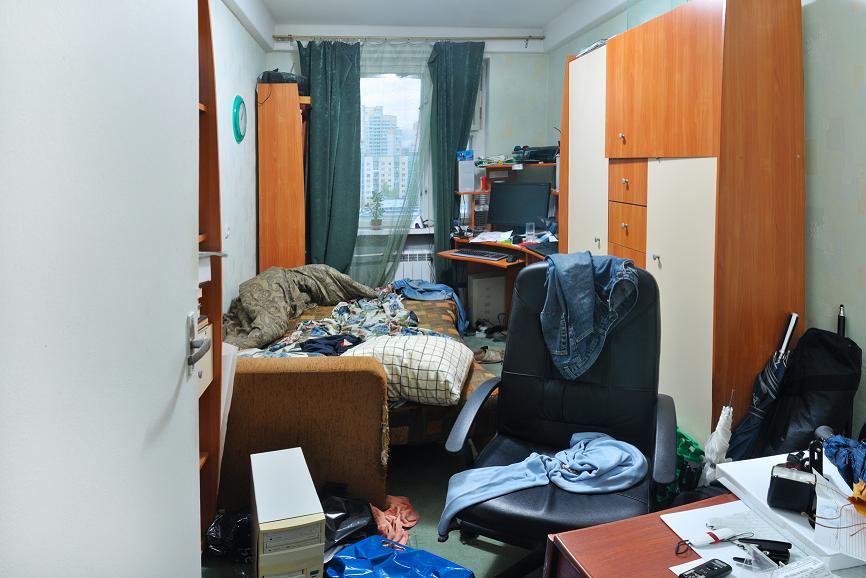- Home
- 7 Steps of Goal Setting
- Declutter
5 Steps to Declutter Today
Declutter and feel your frustration lift as you reclaim your space and increase your energy. Getting rid of clutter can be hard. Some things are laden with emotional value and others beg the question "what if I need it in the future?"
Here I provide 5 steps get rid of clutter in different areas of your life quickly. These steps include:
- Having a vision of how you want to use the reclaimed space
- Recognising that there are two types of clutter
- Starting small and have a plan
- Practicing the F.A.S.T approach to clutter control
- Having a place for everything and everything in its place
Have a vision of your reclaimed space
Are you stressed by just thinking of the mountain of clutter that has accumulated in different areas of your home? Before you start to get rid of clutter, stop and visualize what you want to do with your reclaimed space. Your clarity of vision serves three purposes.
- From your garage to your closet, from your home to your life, having a clear vision of what it will be like when your space is decluttered is a motivating experience.
- By focusing on what you want and the relationship between you and your space (rather than the quantity of stuff) you really make some permanent changes in your habits.
- You are less likely to fill your space with unwanted clutter if you are clear on your vision.
Recognize the different types of clutter
You can get rid of clutter in your life, create more space at home, and conquer the mountain of papers on your desk or in the office. But it is important to know that there are different types of clutter!
Clutter can be of the memory type. These are those things that have an emotional value to you and have memories attached to them. Another type of clutter is based on the idea "I might need this in future." This type of clutter is usually the target for organizing clutter.
When thinking about getting rid of clutter ask yourself the follow question "Does this item move me closer to the vision of the life that I have?" If the item moves you closer, keep it; if not then what is it doing here?
Have a plan to declutter
Planning your clutter removal occurs on two levels. First get the big picture - "What do you want to use this space for?" Have a clear idea of how you want this space to look after you have decluttered.
The second part of planning is to schedule the time to declutter. This can be as little as 10 minutes a day.
Decluttering is often overwhelming and daunting prospect that you may not be looking forward to. Start small and develop momentum to break the inertia! For example, choose a surface, a room, or a desk that you want to declutter and use the F.A.S.T approach to organize and then sweep clutter away.
This 'divide and conquer' strategy means that you won't tackle things that are too big, a real motivation drainer! Sometimes a 'to-do' list with a set time for each task is helpful.
Use the F.A.S.T approach to sweep away clutter
Use the F.A.S.T approach to organize and then sweep clutter away.
F: Fix a time. Getting rid of clutter can be a daunting prospect. Do you find that you procrastinate over your clutter clearing sessions? Write down an appointment in your planner and stick to it.
A: Anything not used recently. When was the last time you used the old set of tools or the box of clothes in the attic? Potential items that can go on your list of clutter are items that you have not used in the last 12 months. Ask yourself the following questions:
- When did you last use the item?
- Are you likely to use it again?
- Is it worth holding onto it, given my home is cluttered?
S: Someone else's clutter. Is your home a storage space for other people's clutter? If your home is cluttered with someone else's belongings then it is time to politely let the person know that they should pick up their property.
T: Trash. Your trash can is your good friend when getting rid of clutter.
Your clutter control goal is to keep those things that make sense in the space that you have.
Have a place for items and reward yourself
Everything has a home. Most professional organizers go by the mantra "Have a place for everything and everything in its place." This clutter principle means that each item that you decide to keep has a deliberate and purposeful existence to help you to achieve vision that you are building towards.
Praise yourself. Often our hardest task master is yourself. If this is true then make sure you praise yourself for a job well done. Enjoy the space and freedom that you have created. This is one of the long-term benefits that you get from clearing clutter.
If you liked this declutter article then you will like this article on organizing files and organizing bills.

New! Comments
Have your say about what you just read! Leave me a comment in the box below.